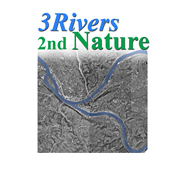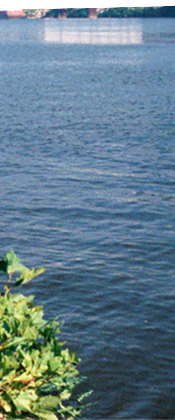Home> River Research> Ohio River> Water Quality
Ohio River Water Quality Report
and Comparative analysis
Kathy Knauer, M.S.
Water quality studies involved regular testing of physical chemistry parameters and pathogen indicators. Four three-point transects were set across in specific places in pools 2 and 3 of the Ohio River. These sites were sampled over a six week period in dry weather conditions. Single point sampling sites were also placed at the mouths of all streams. The field sampling and the results do not reflect the PA DEP or US EPA water quality sampling criteria, which would require 5 samples in 30 days averaging both wet and dry weather conditions. A minimal wet weather study was also conducted.
Rivers in Dry Weather: Our sampling indicates that dry weather water quality conditions in the Ohio River Pools 2 and the upper section of Pool 3 meet our target water quality standard for recreational use most of the time. The exception is Mile Point 11.9, left bank descending, by the Sewickley Bridge.
Rivers in Wet Weather: Our data suggest that the Pittsburgh Pool and Ohio River Pool 2 are impacted by fecal contamination the days following a wet weather event. This is based on minimal wet weather events and further studies are suggested.
Tributary Streams: Our study shows that during dry weather, fecal coliform concentrations vary among the tributary streams studied. Three streams had geometric means for fecal coliform greater than 1,000 CFU/100ml. Chemical and field tests indicate most parameters are within an expected range for this region and within state water quality standards.
Comparitive conclusion: Our study indicates that during dry weather most of our sampling sites along the Ohio River are below our target number for fecal coliform, indicating little fecal contamination. The majority of the tributary streams sampled have fecal coliform concentrations lower than 300 CFU/100ml and E. coli concentrations lower than 200 CFU/100ml. Wet weather river water quality is impacted by fecal pollution in both the Pittsburgh Pool and Ohio River Pool 2. The project recommends future studies to determine the sources of the fecal pollution utilizing molecular and biochemical methods.


